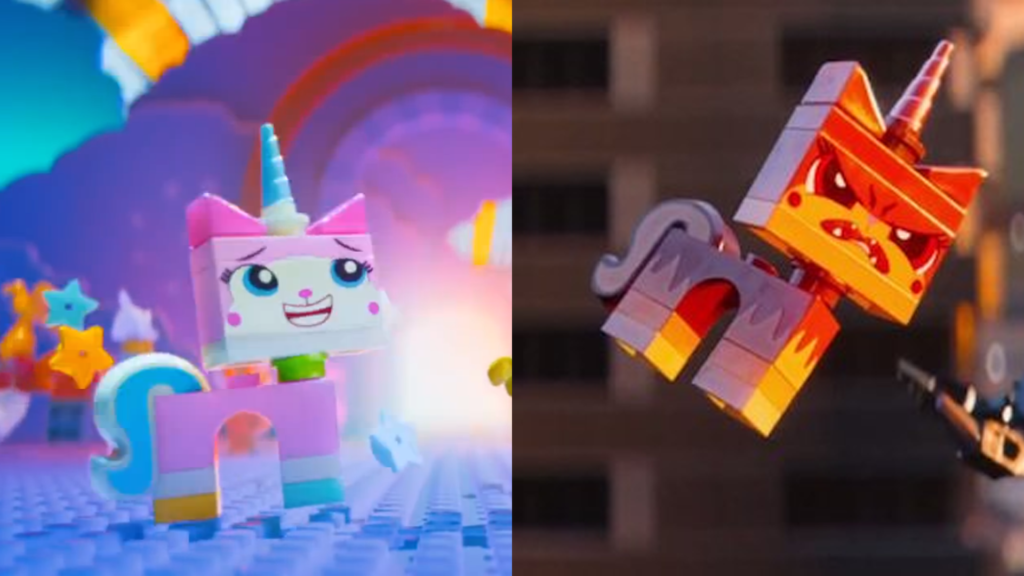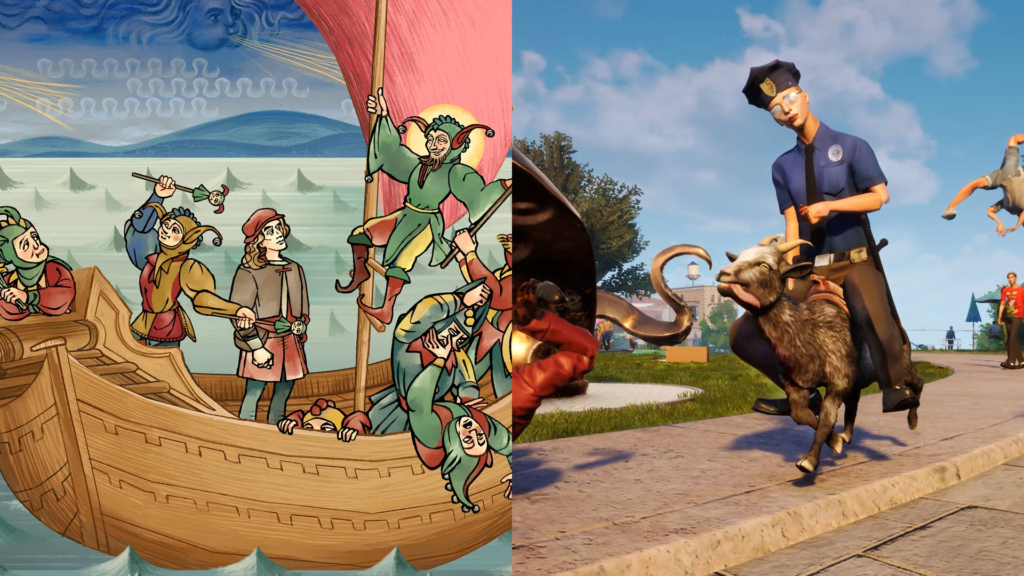As someone who has had to bear witness to every game dev complaint cycle that has occurred on social media over the past decade, I can say that real life is a roguelike with how many times the same argument happens repeatedly. Recently on social media, I saw someone perfectly encapsulate one of the worst thoughts you can have about game design, and they’re not alone. A problem that a lot of developers and consumers have when it comes to understanding and analyzing games is when they only view games from their specific point of view, and it’s time to talk about why tunnel vision is bad for game design.
My Way or the Highway
Tunnel-vision in this respect is only looking at the industry and games from one specific point of view — yours. We see this from critics, journalists, YouTubers, streamers, and consumers: “I don’t like game X, so X is just bad” or “I really like this, so it must be perfect.”
We can also see this any time a game comes out as a surprise hit — your Balatros, Vampire Survivors, FTL, and so on. You will always hear a chorus of people declaring “Why is this game doing so well? It’s just X.” Game design analysis is still a mystery to people, not just those outside of the industry. Being able to examine the UI/UX, the progression, and the feel of a game to see how it resonates with people may sound like magic, but for people like me who do this daily, it’s as easy as breathing.
The problem for a lot of people who try to talk about games is that they tend to view “videogames” as this monolithic term — one game is the same as all games — You get the same experience playing Call of Duty as you would Elden Ring or Stardew Valley. So, if you just play one game, or like one game, then that’s all you need from the game side of things to build something. Or that one kind of game should be the definition for “the game” that all others should be judged by. This is the same crowd who will also discount genres that they don’t like or think that they can just jump into a completely different genre and make a best-selling game.
And while the social media post may just be talking about specific games that just try to copy something that’s already been done, there are people on the consumer and developer side who take it to the extreme — that only their game, or particular style of game, matters, and everything else is just lesser or unimportant.
With that, it’s time to burn some bridges to talk about the kinds of tunnel vision I see that give me a headache every time.
Loathsome Wholesome
A lot of videogames are about fighting or overcoming some kind of conflict, as I’m sure everyone of you reading this knows fully well. And there are people who, surprisingly, don’t want to play games with violence in them. And a few years ago, a new marketing term and movement was created around the “wholesome” brand — games that specifically are meant to be for people who don’t want violence in their games.
That in itself is great, there have been a lot of cozy games released that explored different topics and themes without combat whatsoever. However, there are people and designers who have taken this too far and define wholesome as better than anything else. And if a game looks charming and cozy, but doesn’t meet their definition of wholesome, then the game is lying to them, the developers are trying to con them, and that there is something wrong with the game. Another problem for them is if a game looks wholesome but wants to talk about something dark or unsettling that’s important, then that doesn’t belong either in their opinion.

How (some) wholesome fans act when they get their way, and when they don’t (source:Author)
Just as there is toxic negativity, there is toxic positivity — where something must only be good and pure and there can never be anything wrong or bad or any criticisms mentioned. And again, if a developer wants to make a game like that, that’s fine. The problem is when people demand that, or if a game doesn’t adhere exactly to their point of view, then it’s a problem with the game and the designers themselves.
As you’re going to see with the other examples, only focusing on the extreme examples that fit your point of view is not how you should digest videogames or make them.
Simple is Stupid
Videogames have been around long enough that we have gone through multiple revisions and evolutions of design. The biggest was the move from 2D to 3D that occurred in the mid-90’s. Despite that, there was a 2D revolution among the indie scene in the 2010’s that led to some of the most amazing-looking, and playing, games released. However, there is this sentiment from both consumers and fans that 2D design is “simple”, it is meant to be a steppingstone to making real games: those that are 3D.
One of the biggest tells that someone can have when they don’t understand design is when they make fun of 2D games for being simple or easy to do. This is also part of the anti-casual crowd, who think that easy games are beneath them. The truth is that 2D design is very hard to do right, because there are so many examples of it out there. For every Hollow Knight or Ori, there are countless games that feel and play wrong within the 2D space. If you think that you can just hit a button and turn a 3D experience into 2D or vice-versa, you are never going to make a great game.
Even the “simplest” game is anything but. Too many developers and consumers view complexity as a metric for quality and not a problem with the UI/UX. And don’t get me started on making an effective 2D camera for a game, as this post will turn into a short story at that point.
Wailing About Walking
On the opposite side of the problem, there are people who only think that a game is something where you need to save the world/princess/universe at the end of it and be called a hero. Part of the evolution of design over the 2010’s was seeing games that weren’t like anything else that came before it. Titles that focus on storytelling, art, and cinematography, rather than on APM and combat.
You can dislike walking simulators, visual novels, or any gameplay-less game that you want, but that doesn’t mean these aren’t games. And again, if you think that just putting sad music, text on a screen, and walking slowly, will make the videogame equivalent of a Picasso, that’s not going to work. Just as there is a huge difference between good and bad 2D design, there is also a wide line between good and bad story-driven games.
Games are ART (insert fancy font)
And now we turn to the endless debate about videogames — yes, videogames are art. This point is from people who when they think of “art” only think of something meant to trigger a core memory from their childhood and start weeping uncontrollably at a game — not the joy of landing a triple wall jump dive to find a hidden secret in a level.
There are a lot of modern designers who look at games that focus entirely on story above all else as the perfect game. That if a videogame is not inspired by classic cinema, poetry, or makes references to Aristotle, then it’s trash for the peasants. This goes back to the previous point with viewing 2D design as lesser compared to 3D, and that it’s almost beneath them to play a game whose entire story can be summed up as “the president has been kidnapped by ninjas.”

videogames are playable art, and the “playable” part is important if you want a consumer base (source:Author)
This is part of the social media post that I read, that to them, designers these days are only being inspired by other games, and not by anything else, which is a problem for them.
At the end of the day, shockingly, you should be playing and studying videogames if you want to make a videogame. Not only are videogames art, but they are also an entire medium now, and just as a painter can be inspired by other paintings, designers can be inspired by other games. The reason why we see so many outstanding games from first-time developers and students is the fact that they played a ton of games, specifically the ones that they are inspired by, to study them and learn what they want out of their game.
And I hear this art argument a lot from designers who list their favorite games as those with a majority focus on storytelling — Return of the Obra Dinn, Pentiment, and more. I’m about to shock you with this next statement — both of those games are not shining examples of perfect games or even mass-market appeal games, and before you write me a message telling me I’m wrong or being a contrarian, I’m not the one who said that their consumer bases said it. We see this a lot from critically well-received games, where the critics and other designers declare a game as the greatest thing ever, to only find that the consumer base is the exact opposite. ROD lost 40% of its player base on steam before they even solved 6 fates and Pentiment has 54% churn on steam before beating the first act. I’ve said this before, just because you really like a game or think it’s the best thing ever, doesn’t mean that everything in the game worked for the consumer or that it was perfect. Part of understanding and growing as a designer is to look objectively at a game and find ways that you can improve the UI/UX.
Very artistic games are also very polarizing, and high churn for games with different gameplay is to be expected. However, you shouldn’t be treating a game that lost more than half the consumer base that bought it as the proof that games are art or that they were perfect in every way, nor should you view the sales of that as indication that another game would do just as well. While games are art, they are still a product that’s meant to be enjoyed by consumers, and if the consumer is not enjoying your game, then there was a problem with it that you should understand for your next one.
Hate the Game and the Gamer
For the final point, there’s been these rumblings on social media looking at “creatives” in the game industry. Just as there are people who view 2D as a steppingstone for 3D, there are some people who seem like they view videogames as a steppingstone to “real art” — movies, TV, etc. Some of this can be seen in the AAA space, as designers and studios of the biggest-budget games are now being recognized and celebrated outside of just their game’s fanbases. When they talk about the games they make, they don’t talk about the design, the team behind them, or the implementation, but focus only on the cultural impact of the game and the honor it was to make it.

A misconception people have about Hideo Kojima’s games is that the story trumps his gameplay, but he always designs original gameplay to fit his original stories (source: Author)
We see this when people try to translate videogames to other mediums, and either slavishly try to make the game 1:1 or take out everything in the game to the point that it doesn’t even look recognizable. They’re not understanding the medium of a videogame, and that it is legitimate and different from everything else. There are still people, both in and outside of the industry, who simply don’t like videogames. Just as every other medium had this period of people treating it as just the lesser version of something else. Cartoons and anime for the longest time was viewed as “lesser” to TV and film: that you go do cartoon VA when your career is at rock bottom. It really wasn’t until the mid-2000s, maybe early 2010’s, that voice acting in cartoons and games was given the respect and admiration alongside hiring some famous actor to be in the latest GTA or the voice in an animated film.
At this point, the Game Industry makes more money than other “famous” mediums, and its way past the time that it should be treated with respect and stand on its own.
Gaming Variety
Videogames are not monolithic — a videogame that is about jumping on bunny rabbits to collect carrots while listening to K-Pop is just as legitimate as a game exploring grief after the passing of a loved one. There’s nothing wrong with only liking one particular style of game or genre, but when you feel that is the only one that’s “allowed” and anything else is “wrong”, then we have a problem. And for designers who suffer from tunnel vision as I’ve mentioned, you need to get out of your own head and understand that just because you think your game is amazing, or your fellow friends and designers do, doesn’t mean much if every consumer quits your game after 40 seconds of playing it.
If you would like to support what I do and let me do more daily streaming, be sure to check out my Patreon. My Discord is now open to everyone for chatting about games and game design.

